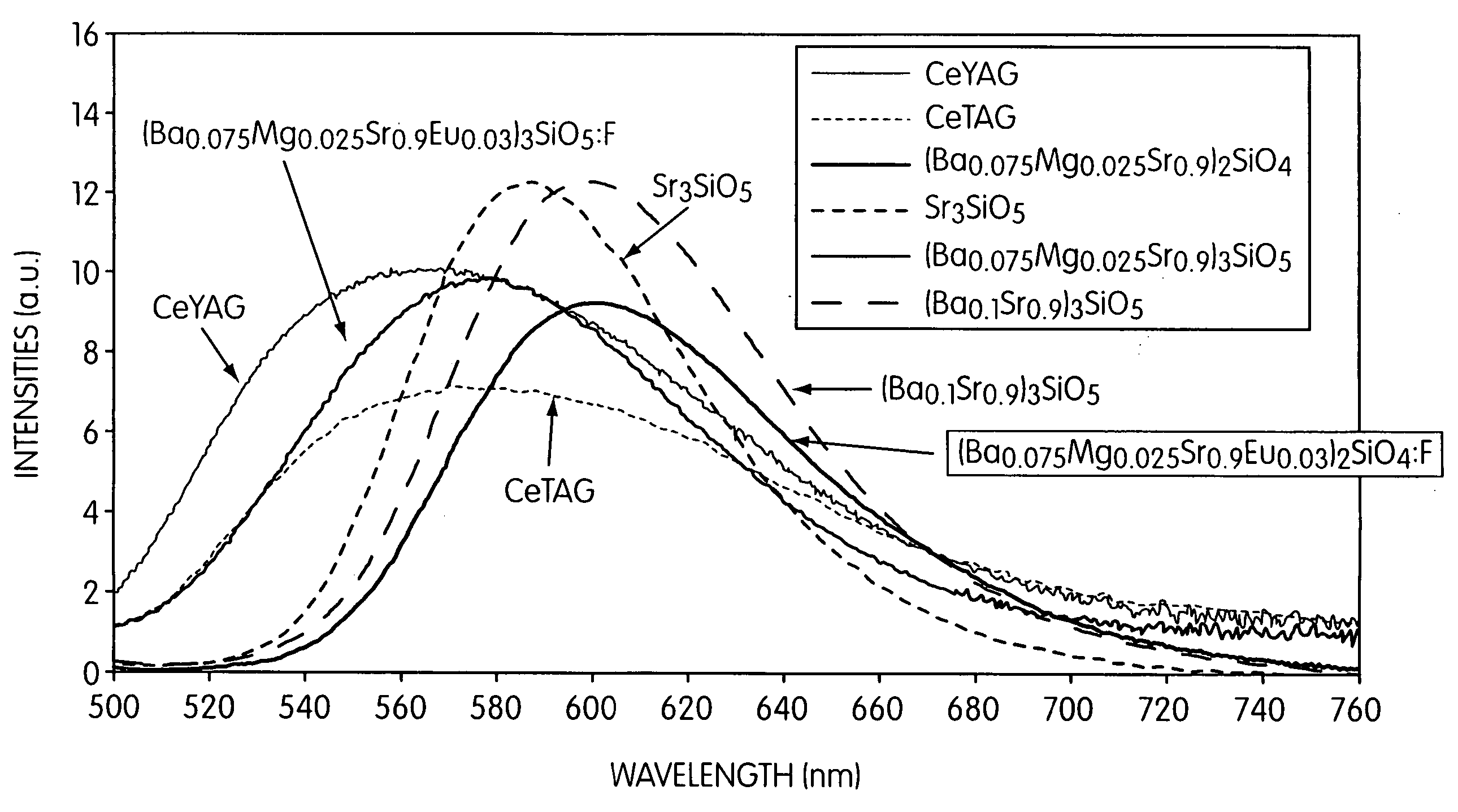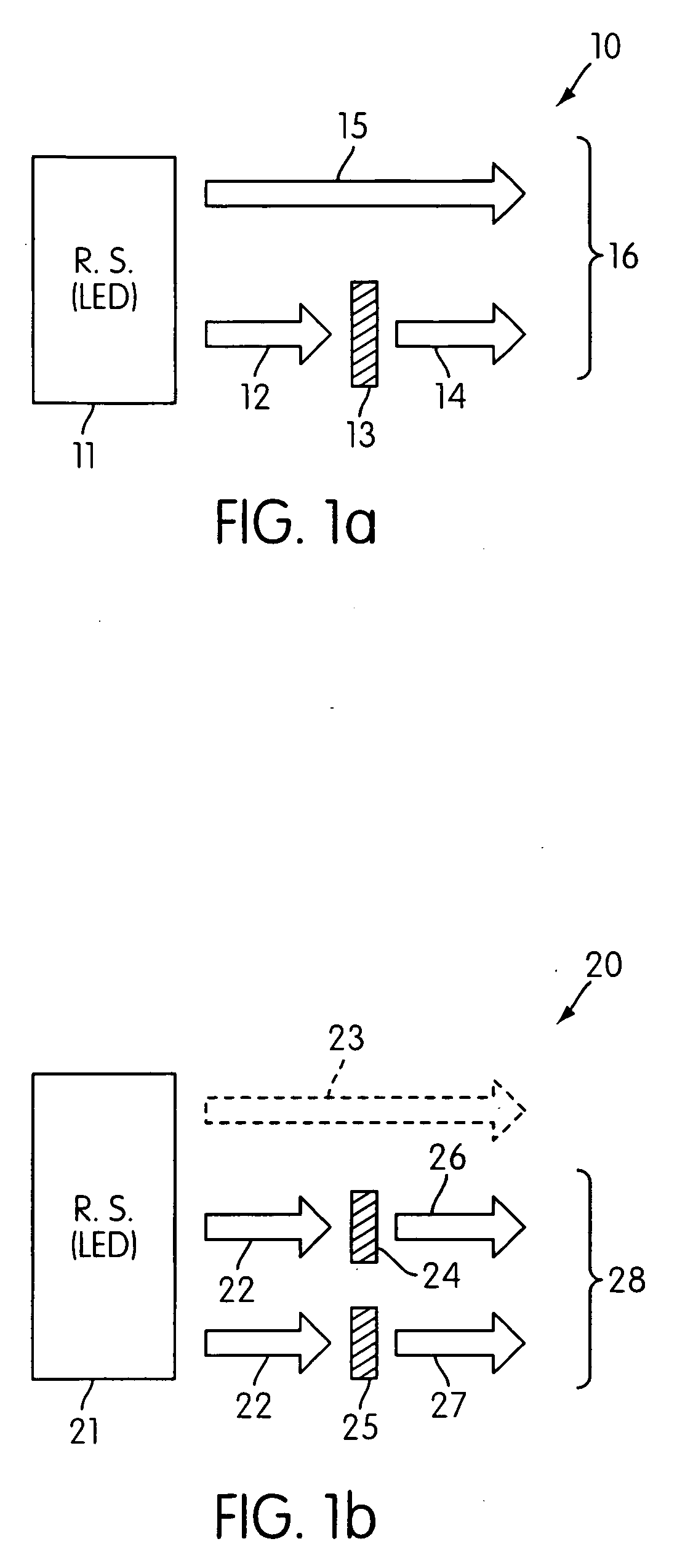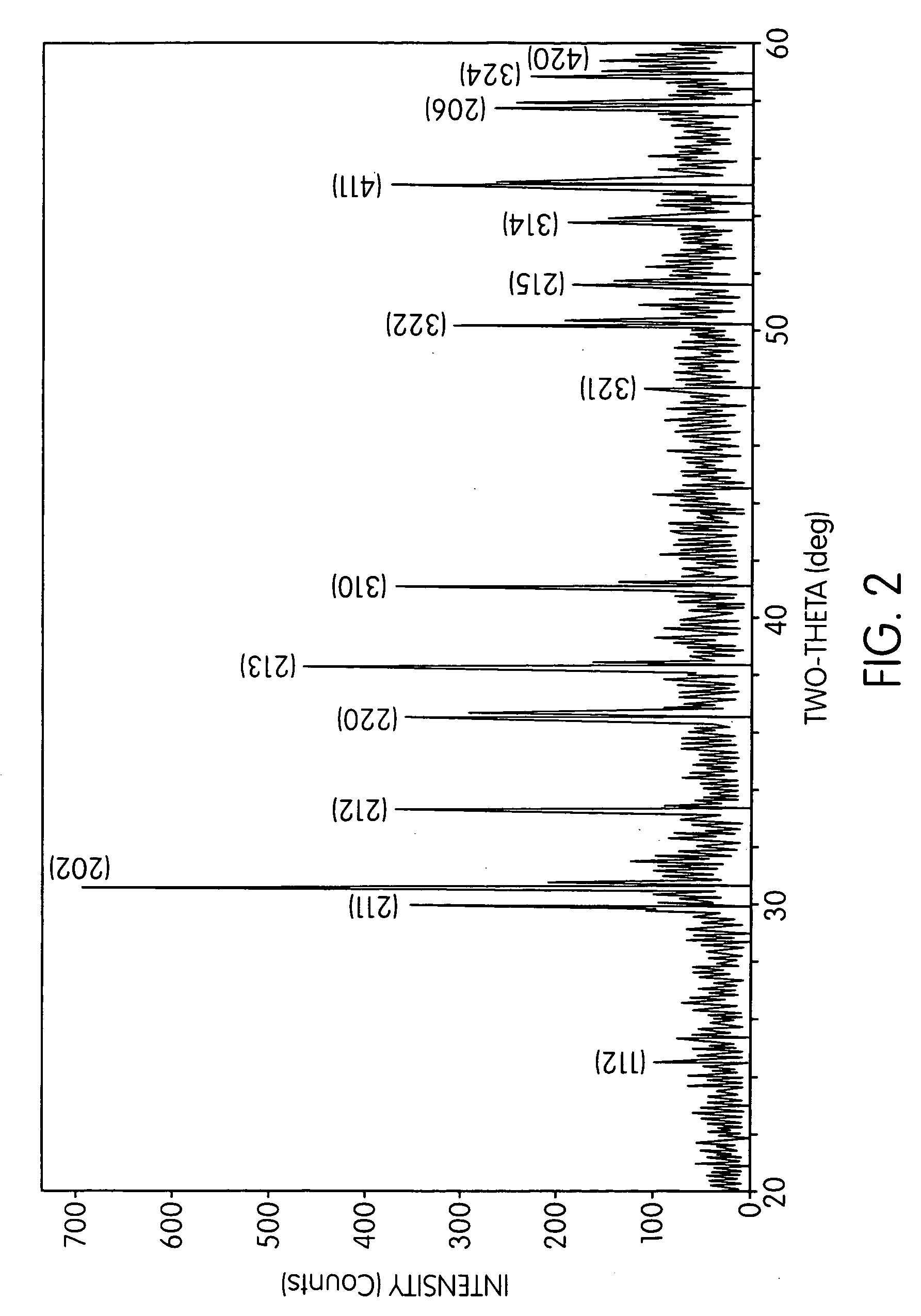Silicate-based orange phosphors
- Summary
- Abstract
- Description
- Claims
- Application Information
AI Technical Summary
Benefits of technology
Problems solved by technology
Method used
Image
Examples
Embodiment Construction
[0038] The novel orange silicate-based phosphors of the present invention have applications not only as long wavelength emitting constituent phosphors in white light illumination systems, but also in any application where an orange or other colored LED may be utilized. Orange LEDs may be excited by both UV and blue light sources because of the longer wavelength of the emitted orange color. Various embodiments of the present orange phosphors will be described in the following order: first, a general description of the novel silicate-based orange phosphor will be given, followed by a discussion of the nature of the host silicate lattice, the effect of varying the relative amounts of the alkaline earth metal to the silicon, and the effect of varying the relative amounts of different alkaline earth metals. Next, the effect of varying the activator content will be disclosed, followed by a discussion of the effect of anion inclusion such as a halogen. Phosphor processing and fabrication m...
PUM
| Property | Measurement | Unit |
|---|---|---|
| peak emission wavelength | aaaaa | aaaaa |
| wavelength | aaaaa | aaaaa |
| wavelength | aaaaa | aaaaa |
Abstract
Description
Claims
Application Information
 Login to View More
Login to View More - R&D
- Intellectual Property
- Life Sciences
- Materials
- Tech Scout
- Unparalleled Data Quality
- Higher Quality Content
- 60% Fewer Hallucinations
Browse by: Latest US Patents, China's latest patents, Technical Efficacy Thesaurus, Application Domain, Technology Topic, Popular Technical Reports.
© 2025 PatSnap. All rights reserved.Legal|Privacy policy|Modern Slavery Act Transparency Statement|Sitemap|About US| Contact US: help@patsnap.com



